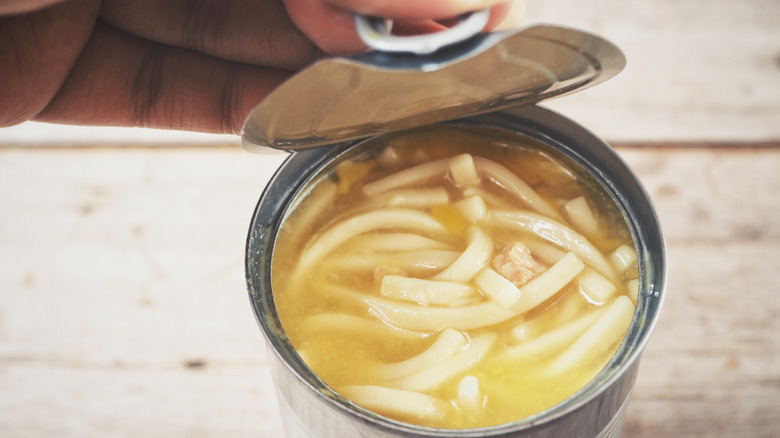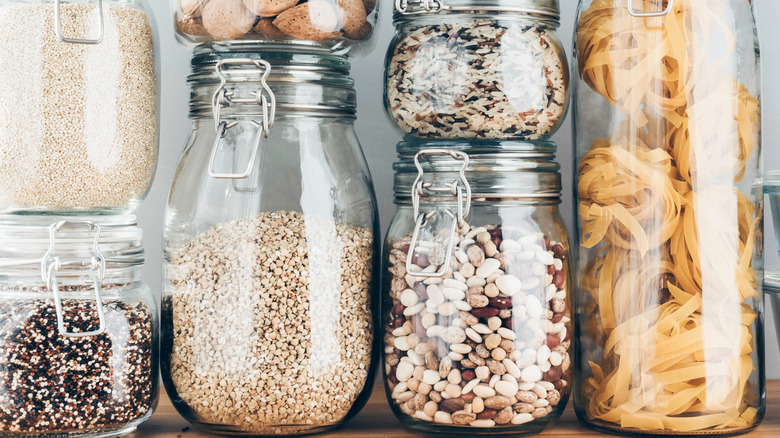What To Consider Before Adding More Pasta To Canned Soup
Canned soup is the star of many pantries for numerous reasons. It's an economical choice, it's convenient, and it typically has a long shelf life. While it's a cheap, tasty, and quick meal, it can sometimes leave you feeling hungry shortly after eating it. One way to avoid this problem is to bulk up your canned soup and keep you feeling full for longer, by adding additional ingredients.
You can toss in a handful of shredded rotisserie chicken or other cooked meat you have in the fridge or plant-based protein sources like tofu or tempeh. Of course, adding protein will increase the meal's satiety level, but you don't have to add meat or other proteins in order to feel more full. You can also add veggies, beans, pasta, or other grains. As reported by From My Bowl, adding some greens either as an adornment, or swirled right into the pot, helps amp up the flavor, texture, and nutritional content.
Grains soak up moisture
Although the options for adding items to soup may seem endless, before you get too far into adding ingredients, it's a good idea to think about how those additions may affect the existing texture or structure of your canned soup. Since soups are so wonderfully versatile they can be enhanced with the addition of virtually any sort of grain you have in your pantry.
Pasta, rice, quinoa, farro, barley, and many other grains can be added to your canned soup. While these are tasty additions, there is a word of caution and a general rule to remember when doing this. As outlined in Bon Appétit, adding grains or pasta means that they will absorb the liquid in your canned soup. One way to counteract this is by replacing this liquid by either adding water, or for an extra flavor boost, try adding chicken, turkey, beef, and even vegetable stock.

